- 1Department of Physics, Zhejiang Normal University, Jinhua, China
- 2Department of Physics, Renmin University of China, Beijing, China
- 3Beijing Key Laboratory of Opto-Electronic Functional Materials and Micro-Nano Devices, Renmin University of China, Beijing, China
We present a numerical analysis on dynamical steady states of polariton Bose–Einstein condensates (BECs) in an incoherent exciton reservoir driven by a ring-shaped optical pump. The balance between the loss and gain of polariton BEC induces a variety of steady states with different configurations, including approximate Gaussian distribution and topological defects, such as vortex–antivortex pairs, vortices with a winding number, and solitons. Besides, the system becomes unstable under fast decay rates and small pumping ring, where BECs can no longer exist in the long-time limit. We also confirm the soliton is dynamically stable in this system, with a steady polariton current induced by the repulsive polariton–polariton and polariton–exciton interactions.
1 Introduction
Polariton is a strong light–matter–coupled quasiparticle formed in semiconductor microcavities. Sufficiently strong optical pump can stimulate a spontaneous transition of bosonic polaritons to Bose–Einstein condensates (BECs) [1, 2]. Many features of atomic BEC have been successfully demonstrated in polariton BEC, such as long-rang coherence [3, 4], superfluid flow [4–6], and quantized vortices [7–10]. The combination of photon component with an extremely light effective mass and exciton component with strong interaction is essential for the high transition temperature [11–13] and fast thermalization in polariton BECs. Recent experiments have shown that polariton interactions can be enhanced by orders of magnitude through injecting an itinerant electron gas into a monolayer transition metal dichalcogenides [14, 15]. Moreover, the nonlinear interaction between polaritons and reservoir excitons causes a variety of reconfigurable potential barrier for polariton BECs [16], such as parabolic potential [17], chiral polaritonic lenses [18], and ring-shaped potential [19, 20]. Besides, rich vortex multistability [21–23] and Thomas–Fermi regime [24] revealed in the ring-shaped pumping potential provide opportunities to explore topological defects in nonequilibrium systems.
The polariton BEC is a dynamical steady state instead of a thermal equilibrium due to the rapid radiative decay of polariton and optical pump maintaining excitons. It provides a platform to study nonequilibrium quantum system with a macroscopic coherence. The leakage of photons from cavity and the decay of excitons via radiative and nonradiative processes set a finite lifetime of polaritons. The development of new structures can extend the cavity photon lifetime from 20 to 30 ps [25] to 200 ps or more [26, 27]. Since the leaking photons carry the density, momentum, energy, spin, and phase information of polaritons, it is possible to characterize the nonequilibrium dynamics of polariton BECs via photon luminescence of the escaped photons [28, 29].
The aim of this study was to investigate dynamical steady states of polariton BECs in incoherent exciton reservoir driven by a ring-shaped optical pump. Owing to the nonequilibrium nature of polariton BEC, the ring-shaped pump and decay can induce considerable effect on the steady states. First, the phase diagram of the steady states of polariton BEC by varying pumping and decay rates is depicted. The phase diagram consists of regions where the polariton BEC acquires an approximate Gaussian distribution, a vortex ring structure, a soliton structure, and a ring mode configuration. Second, different types of steady states in the phase diagram are, respectively, investigated by the density and phase distributions. Some exotic topological defects, such as higher order vortices and vortex–antivortex pairs, are then characterized and distinguished. And the effects of noise of initial condition and particle number on the dynamical evolution processes are discussed. Finally, the stability of solitons in the two-dimensional nonequilibrium system is analyzed. We find that several steady states can form spontaneously inside the pumping ring due to particle current induced by the nonlinear polariton–polariton and polariton–exciton interaction.
The remainder of this article is organized as follows. In Section 2, we present the mean-field formalism to incorporate the reservoir exciton. The phase diagram of steady states of polariton BEC is depicted and analyzed in Section 3. The features of different phases in the phase diagram are investigated in Section 4. Finally, we summarize the main results in Section 5.
2 Theoretical Model
At the mean-field level, the condensate dynamics can be described in terms of the Gross–Pitaevskii equation (GPE), which can be generalized to nonequilibrium systems by considering pumping and loss of polaritons with stimulated scattering [30, 31]. As a result, an open-dissipative GPE (ODGPE) with complex terms for condensate wave function
Here,
where
The exciton reservoir provides a source for creating condensed polaritons via stimulated scattering processes. The dynamics of polariton BEC is controlled by the following parameters: the decay rates of coherent polaritons
3 Phase Diagram
Previous investigations on polariton BEC have revealed various types of spontaneous formations of steady states [39, 40]. However, the boundaries between different steady states are ambiguous in the presence of balance between polariton loss and gain from reservoir. In this section, we discuss the steady-state solutions of polariton BEC by numerically evolving Eq. 1 with a different pumping radius R and the ratio between polaritons and reservoir decays
In Figure 1, we show the phase diagram of steady states with tuning the pumping radius R and decay rate ratio
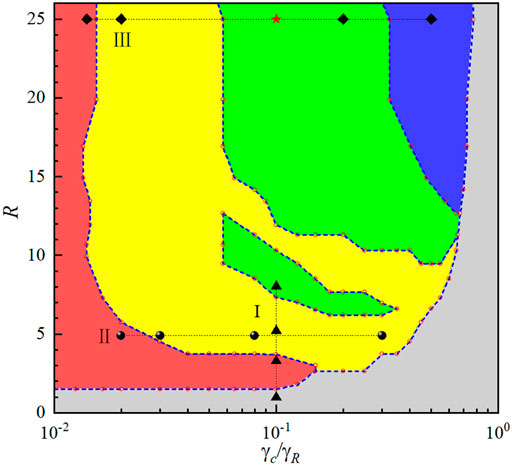
FIGURE 1. (Color online) Phase diagram described by Eq. 1 for the pumping radius R and the decay ratio
We find that faster loss of polaritons (large
4 Dynamical Evolution
The density and phase distributions of polariton BEC in different steady states are investigated, respectively, in Figures 2, 3, 5. For polariton BECs with fixed decay ratio
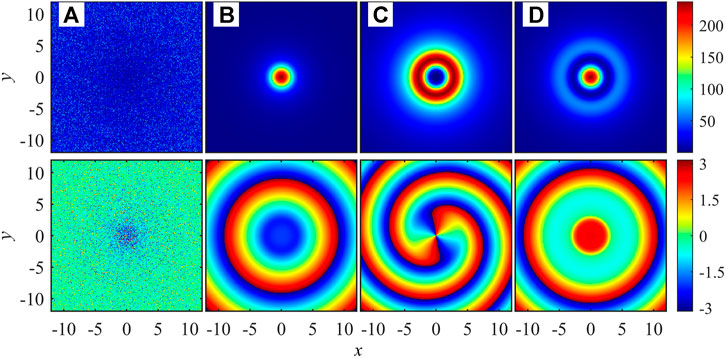
FIGURE 2. (Color online) Polaritons density
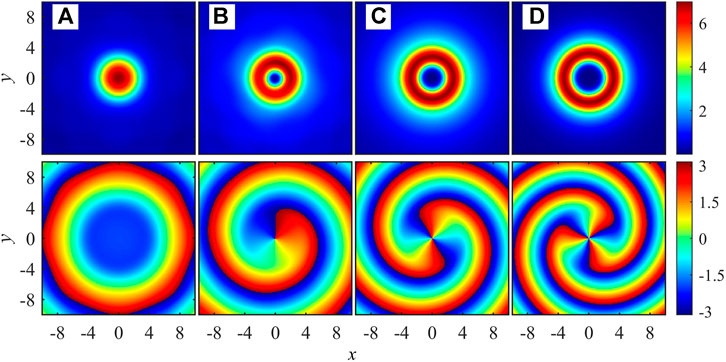
FIGURE 3. (Color online) Steady-state distributions of polaritons density
High-order vortices are unstable in conservative systems, which will evolve into vortices with winding numbers
To further characterize the effect of fluctuations in the initial condition, we study the time evolution of the total number of polaritons
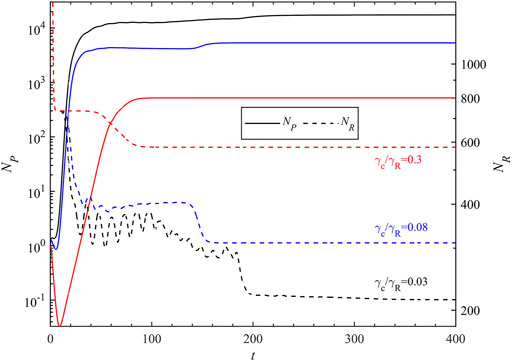
FIGURE 4. (Color online) Evolutions of total number of polaritons
If the exciton reservoir is pumped by a large ring-shaped laser with radius
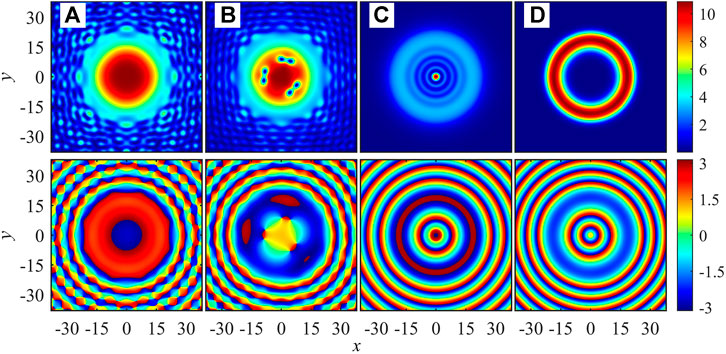
FIGURE 5. (Color online) Steady-state distributions of polaritons density
Soliton is a self-localized, shape-preserving solution of nonlinear partial differential equations. Solitons in polariton BEC are inherently dissipative and different from the ones in closed systems. To confirm the stability of solitons, we investigate the radial density evolution of soliton as shown in Figure 6A, with
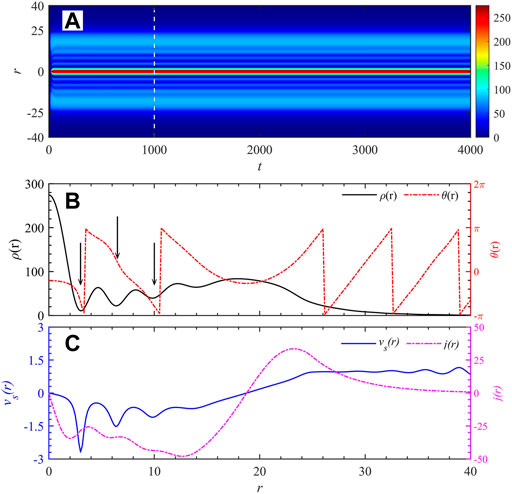
FIGURE 6. (Color online) (A) Radial evolution of polaritons density
5 Conclusion
In this work, we investigate the spontaneous formation of steady states of polariton BEC described by ODGPE under ring-shaped pump and incoherent exciton reservoir. By varying the pump radius and decay rates, we systematically map out the phase diagram via the density and phase distributions of polariton BEC and investigate the features of different phases. Specifically, we distinguish the regions of approximate Gaussian distribution (AGD), spontaneous formed vortices, solitons, and ring mode phases. We also find a region where the polariton BEC is unstable in the long-time limit. We also verify the soliton to be dynamically stable in this two-dimensional nonequilibrium system, where a balance is established in the long-time limit between excited polaritons around the ring-shaped laser and the polariton current flowing away from the boundary.
Data Availability Statement
The original contributions presented in the study are included in the article/Supplementary Material, and further inquiries can be directed to the corresponding author.
Author Contributions
All authors listed have made a substantial, direct, and intellectual contribution to the work and approved it for publication.
Funding
This work is supported by Department of Education of Zhejiang Province (Grant No. KYZ04Y20182), the Beijing Natural Science Foundation (Z180013), the National Natural Science Foundation of China (Grant Nos. 11522436, 11774425, 12074428), the National Postdoctoral Program for Innovative Talents (Grant No. BX201601908), the China Postdoctoral Science Foundation (Grant No. 2017M620991), and the Research Funds of Renmin University of China (Grant Nos. 16XNLQ03 and 18XNLQ15).
Conflict of Interest
The authors declare that the research was conducted in the absence of any commercial or financial relationships that could be construed as a potential conflict of interest.
References
1. Deng H, Weihs G, Santori C, Bloch J, Yamamoto Y. Condensation of Semiconductor Microcavity Exciton Polaritons. Science (2002) 298:199–202. doi:10.1126/science.1074464
2. Carusotto I, Ciuti C. Quantum Fluids of Light. Rev Mod Phys (2013) 85:299–366. doi:10.1103/RevModPhys.85.299
3. Nardin G, Lagoudakis KG, Wouters M, Richard M, Baas A, André R, et al. Dynamics of Long-Range Ordering in an Exciton-Polariton Condensate. Phys Rev Lett (2009) 103:256402. doi:10.1103/PhysRevLett.103.256402
4. Fischer J, Savenko IG, Fraser MD, Holzinger S, Brodbeck S, Kamp M, et al. Spatial Coherence Properties of One Dimensional Exciton-Polariton Condensates. Phys Rev Lett (2014) 113:203902. doi:10.1103/PhysRevLett.113.203902
5. Amo A, Sanvitto D, Laussy FP, Ballarini D, Valle ED, Martin MD, et al. Collective Fluid Dynamics of a Polariton Condensate in a Semiconductor Microcavity. Nature (2009) 457:291–5. doi:10.1038/nature07640
6. Chestnov IY, Rubo YG, Kavokin AV. Pseudodrag of a Polariton Superfluid. Phys Rev B (2019) 100:085302. doi:10.1103/PhysRevB.100.085302
7. Lagoudakis KG, Wouters M, Richard M, Baas A, Carusotto I, André R, et al. Quantized Vortices in an Exciton–Polariton Condensate. Nat Phys (2008) 4:706–10. doi:10.1038/nphys1051
8. Roumpos G, Fraser MD, Löffler A, Höfling S, Forchel A, Yamamoto Y. Single Vortex-Antivortex Pair in an Exciton-Polariton Condensate. Nat Phys (2011) 7:129. doi:10.1038/nphys1841
9. Kwon MS, Oh BY, Gong SH, Kim JH, Kang HK, Kang S, et al. Direct Transfer of Light’s Orbital Angular Momentum onto a Nonresonantly Excited Polariton Superfluid. Phys Rev Lett (2019) 122:045302. doi:10.1103/PhysRevLett.122.045302
10. Sun FX, Niu ZX, Gong QH, He QY, Zhang W. Emergence and Stability of Spontaneous Vortex Lattices in Exciton-Polariton Condensates. Phys Rev B (2019) 100:014517. doi:10.1103/PhysRevB.100.014517
11. Christopoulos S, von Högersthal GBH, Grundy AJD, Lagoudakis PG, Kavokin AV, Baumberg JJ, et al. Room-temperature Polariton Lasing in Semiconductor Microcavities. Phys Rev Lett (2007) 98:126405. doi:10.1103/PhysRevLett.98.126405
12. Plumhof JD, Stöferle T, Mai L, Scherf U, Mahrt RF. Room-temperature Bose-Einstein Condensation of Cavity Exciton-Polaritons in a Polymer. Nat Mater (2014) 13:247–52. doi:10.1038/nmat3825
13. Gu J, Chakraborty B, Khatoniar M, Menon VM. A Room-Temperature Polariton Light-Emitting Diode Based on Monolayer Ws 2. Nat Nanotechnol (2019) 14:1024–8. doi:10.1038/s41565-019-0543-6
14. Tan LB, Cotlet O, Bergschneider A, Schmidt R, Back P, Shimazaki Y, et al. Interacting Polaron-Polaritons. Phys Rev X (2020) 10:021011. doi:10.1103/PhysRevX.10.021011
15. Emmanuele R, Sich M, Kyriienko O, Shahnazaryan V, Withers F, Catanzaro A, et al. Highly Nonlinear trion-polaritons in a Monolayer Semiconductor. Nat Commun (2020) 11:1–7. doi:10.1038/s41467-020-17340-z
16. Pieczarka M, Boozarjmehr M, Estrecho E, Yoon Y, Steger M, West K, et al. Effect of Optically Induced Potential on the Energy of Trapped Exciton Polaritons below the Condensation Threshold. Phys Rev B (2019) 100:085301. doi:10.1103/PhysRevB.100.085301
17. Tosi G, Christmann G, Berloff N, Tsotsis P, Gao T, Hatzopoulos Z, et al. Sculpting Oscillators with Light within a Nonlinear Quantum Fluid. Nat Phys (2012) 8:190–4. doi:10.1038/nphys2182
18. Dall R, Fraser MD, Desyatnikov AS, Li GY, Brodbeck S, Kamp M, et al. Creation of Orbital Angular Momentum States with Chiral Polaritonic Lenses. Phys Rev Lett (2014) 113:200404. doi:10.1103/PhysRevLett.113.200404
19. Sun YB, Yoon Y, Khan S, Ge L, Steger M, Pfeiffer LN, et al. Stable Switching Among High-Order Modes in Polariton Condensates. Phys Rev B (2018) 97:045303. doi:10.1103/PhysRevB.97.045303
20. Mukherjee S, Myers DM, Lena RG, Ozden B, Beaumariage J, Sun Z, et al. Observation of Nonequilibrium Motion and Equilibration in Polariton Rings. Phys Rev B (2019) 100:245304. doi:10.1103/PhysRevB.100.245304
21. Ma XK, Peschel U, Egorov OA. Incoherent Control of Topological Charges in Nonequilibrium Polariton Condensates. Phys Rev B (2016) 93:035315. doi:10.1103/PhysRevB.93.035315
22. Yulin AV, Desyatnikov AS, Ostrovskaya EA. Spontaneous Formation and Synchronization of Vortex Modes in Optically Induced Traps for Exciton-Polariton Condensates. Phys Rev B (2016) 94:134310. doi:10.1103/PhysRevB.94.134310
23. Ma XK, Schumacher S. Vortex Multistability and Bessel Vortices in Polariton Condensates. Phys Rev Lett (2018) 121:227404. doi:10.1103/PhysRevLett.121.227404
24. Estrecho E, Gao T, Bobrovska N, Comber-Todd D, Fraser MD, Steger M, et al. Direct Measurement of Polariton-Polariton Interaction Strength in the thomas-fermi Regime of Exciton-Polariton Condensation. Phys Rev B (2019) 100:035306. doi:10.1103/PhysRevB.100.035306
25. Wertz E, Ferrier L, Solnyshkov D, Johne R, Sanvitto D, Lemaître A, et al. Spontaneous Formation and Optical Manipulation of Extended Polariton Condensates. Nat Phys (2010) 6:860–4. doi:10.1038/nphys1750
26. Steger M, Liu GQ, Nelsen B, Gautham C, Snoke DW, Balili R, et al. Long-range Ballistic Motion and Coherent Flow of Long-Lifetime Polaritons. Phys Rev B (2013) 88:235314. doi:10.1103/PhysRevB.88.235314
27. Steger M, Gautham C, Snoke DW, Pfeiffer L, West K. Slow Reflection and Two-Photon Generation of Microcavity Exciton–Polaritons. Optica (2015) 2:1–5. doi:10.1364/OPTICA.2.000001
28. Sanvitto D, Marchetti F, Szymańska M, Tosi G, Baudisch M, Laussy FP, et al. Persistent Currents and Quantized Vortices in a Polariton Superfluid. Nat Phys (2010) 6:527–33. doi:10.1038/nphys1668
29. Lagoudakis KG, Manni F, Pietka B, Wouters M, Liew TCH, Savona V, et al. Probing the Dynamics of Spontaneous Quantum Vortices in Polariton Superfluids. Phys Rev Lett (2011) 106:115301. doi:10.1103/PhysRevLett.106.115301
30. Wouters M, Carusotto I. Excitations in a Nonequilibrium Bose-Einstein Condensate of Exciton Polaritons. Phys Rev Lett (2007) 99:140402. doi:10.1103/PhysRevLett.99.140402
31. Keeling J, Berloff NG. Spontaneous Rotating Vortex Lattices in a Pumped Decaying Condensate. Phys Rev Lett (2008) 100:250401. doi:10.1103/PhysRevLett.100.250401
32. Manni F, Lagoudakis KG, Liew TCH, André R, Deveaud-Plédran B. Spontaneous Pattern Formation in a Polariton Condensate. Phys Rev Lett (2011) 107:106401. doi:10.1103/PhysRevLett.107.106401
33. Wouters M, Carusotto I, Ciuti C. Spatial and Spectral Shape of Inhomogeneous Nonequilibrium Exciton-Polariton Condensates. Phys Rev B (2008) 77:115340. doi:10.1103/PhysRevB.77.115340
34. Navadeh-Toupchi M, Takemura N, Anderson MD, Oberli DY, Portella-Oberli MT. Polaritonic Cross Feshbach Resonance. Phys Rev Lett (2019) 122:047402. doi:10.1103/PhysRevLett.122.047402
35. Bao W, Wang H. An Efficient and Spectrally Accurate Numerical Method for Computing Dynamics of Rotating Bose–Einstein Condensates. J Comput Phys (2006) 217:612–26. doi:10.1016/j.jcp.2006.01.020
36. Prasad SB, Bland T, Mulkerin BC, Parker NG, Martin AM. Vortex Lattice Formation in Dipolar Bose-Einstein Condensates via Rotation of the Polarization. Phys Rev A (2019) 100:023625. doi:10.1103/PhysRevA.100.023625
37. Liu YK, Liu Y, Yang SJ. Stable Knotted Structure in Spin-1 Bose-Einstein Condensates with Spin-Orbit Coupling. Phys Rev A (2019) 99:063626. doi:10.1103/PhysRevA.99.063626
38. Prasad SB, Mulkerin BC, Martin AM. Stationary States, Dynamical Stability, and Vorticity of Bose-Einstein Condensates in Tilted Rotating Harmonic Traps. Phys Rev A (2020) 101:063608. doi:10.1103/PhysRevA.101.063608
39. Saito H, Kanamoto R. Self-rotation and Synchronization in Exciton-Polariton Condensates. Phys Rev B (2016) 94:165306. doi:10.1103/PhysRevB.94.165306
Keywords: nonequilibrium system, exciton–polariton BEC, steady states, vortices, soliton
Citation: Niu Z-X and Zhang W (2021) Spontaneous Formations of Dynamical Steady States in Polariton Condensates. Front. Phys. 9:696278. doi: 10.3389/fphy.2021.696278
Received: 16 April 2021; Accepted: 07 May 2021;
Published: 30 June 2021.
Edited by:
Hui Hu, Swinburne University of Technology, AustraliaReviewed by:
Xiao-Fei Zhang, National Time Service Center (CAS), ChinaJianming Wen, Kennesaw State University, United States
Copyright © 2021 Niu and Zhang. This is an open-access article distributed under the terms of the Creative Commons Attribution License (CC BY). The use, distribution or reproduction in other forums is permitted, provided the original author(s) and the copyright owner(s) are credited and that the original publication in this journal is cited, in accordance with accepted academic practice. No use, distribution or reproduction is permitted which does not comply with these terms.
*Correspondence: Wei Zhang, d3poYW5nbEBydWMuZWR1LmNu
†These authors have contributed equally to this work
 Zhen-Xia Niu
Zhen-Xia Niu Wei Zhang
Wei Zhang